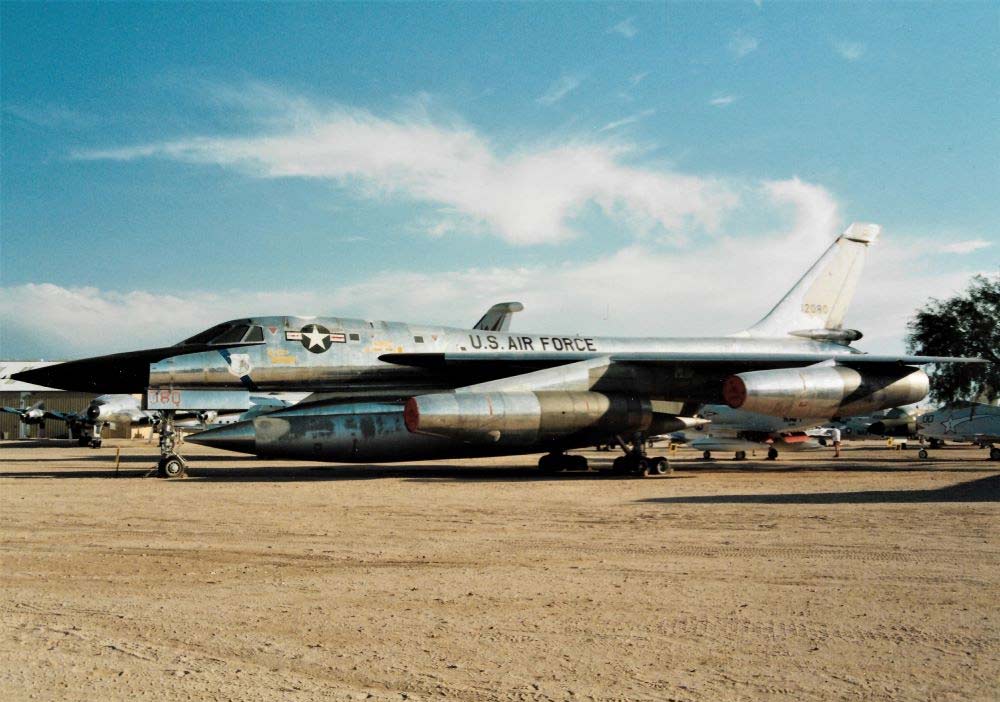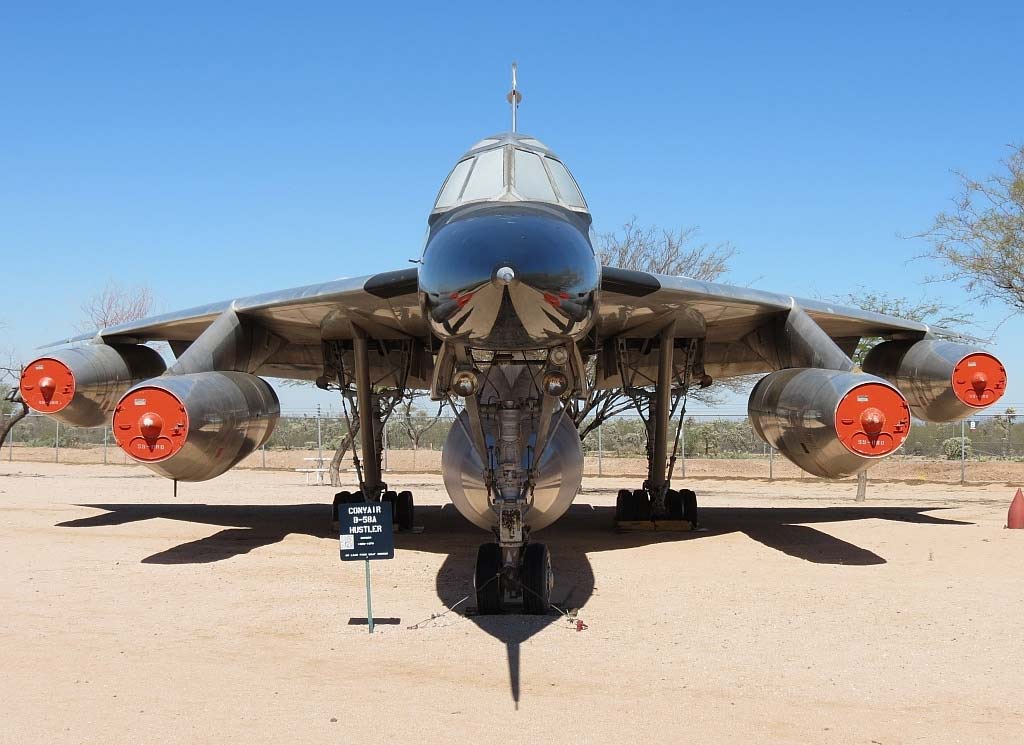The CONVAIR B-58 Hustler was the first operational supersonic bomber capable of Mach 2, the B-58 Hustler symbolized Cold War airpower with its delta-wing design.
In brief
The CONVAIR B-58 Hustler was a high-speed, delta-wing strategic bomber deployed by the United States Air Force (USAF) during the Cold War. As the first operational bomber capable of sustaining speeds above Mach 2, it represented a significant technological leap. Powered by four General Electric J79-GE-5A turbojet engines, the B-58 could deliver nuclear and conventional munitions over long distances at altitudes exceeding 60,000 feet. Its design featured a slender fuselage and delta wings, enabling high-speed performance and reducing radar cross-section. Despite its groundbreaking capabilities, the B-58’s operational life was relatively short due to high costs, maintenance challenges, and the emergence of intercontinental ballistic missiles (ICBMs).

Introduction
In the context of the Cold War’s escalating arms race, the USAF sought a bomber that could penetrate Soviet airspace at speeds and altitudes unreachable by existing aircraft. The B-58 Hustler emerged from this demand, developed by CONVAIR in the 1950s to replace slower, propeller-driven bombers with a jet capable of delivering nuclear payloads with unprecedented speed and precision. The B-58’s development was marked by technical challenges, but it first flew in 1956, entering service in 1960 as a symbol of American airpower.
Design
The design of the B-58 Hustler was revolutionary, featuring a streamlined fuselage and large delta wings that minimized drag and enhanced high-speed performance. Its four General Electric J79 engines were housed in underwing pods, a configuration that contributed to its distinctive appearance and provided significant thrust.
The B-58’s crew of three, including a pilot, navigator-bombardier, and defense systems operator, were seated in tandem in ejection capsules, a safety feature unique among bombers of its era. The aircraft’s avionics and navigation systems were advanced for their time, incorporating early versions of terrain-following radar and inertial navigation systems.
However, the Hustler’s design also presented drawbacks. Its complexity and reliance on high-octane fuel led to operational challenges, including high maintenance costs and limited range without aerial refueling. Additionally, the B-58’s emphasis on speed and altitude compromised its versatility, limiting its ability to perform low-altitude missions.
Performance
The B-58 Hustler’s performance was exceptional, setting several speed and altitude records. Capable of exceeding Mach 2, it had a maximum speed of approximately 1,320 mph (2,123 km/h) and a service ceiling above 60,000 feet (18,288 meters). Its range was around 4,400 miles (7,081 kilometers) with aerial refueling, enabling deep penetration into enemy territory.
Despite its impressive capabilities, the B-58’s operational effectiveness was constrained by its high operational costs and the strategic shift towards ICBMs for nuclear deterrence. Compared to other strategic bombers like the B-52 Stratofortress, the B-58 had a shorter operational range and higher maintenance demands, factors that ultimately led to its early retirement.
Variants
The B-58 program produced several variants, including:
- B-58A: The primary operational version, featuring various improvements over its service life.
- TB-58A: A trainer variant with dual controls for pilot instruction.
- B-58B: A proposed version with enhanced engines and fuel capacity, which was never built due to budget constraints.
Each variant aimed to enhance the B-58’s performance and address its operational limitations, though the B-58A remained the cornerstone of the fleet.

Military Use and Combat
The B-58 Hustler served with the Strategic Air Command (SAC) as a deterrent force, conducting high-altitude reconnaissance and training missions. While it was never used in combat, the Hustler played a crucial role in Cold War strategy, demonstrating the USAF’s ability to deliver nuclear strikes with speed and precision.
The B-58’s armament included nuclear weapons carried in a streamlined pod beneath the fuselage, optimizing aerodynamics and simplifying payload delivery. Its defensive armament was limited to a tail-mounted cannon, reflecting its reliance on speed for evasion.
The aircraft was eventually phased out in the early 1970s, replaced by more versatile and cost-effective platforms like the B-1 Lancer. Its legacy, however, includes contributions to high-speed flight research and the development of supersonic military aircraft.
The CONVAIR B-58 Hustler stands as a milestone in aviation history, embodying the zenith of Cold War bomber design with its unparalleled speed and technological innovations. Despite its operational challenges and brief service life, the B-58’s legacy endures in the advancements it spurred in aerospace engineering and strategic bombing concepts. Its development and deployment encapsulated the era’s tensions and aspirations, marking a significant chapter in the story of military aviation.
Back to the Bombers section.